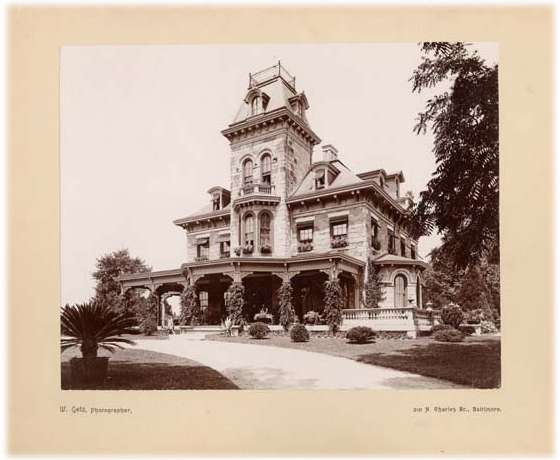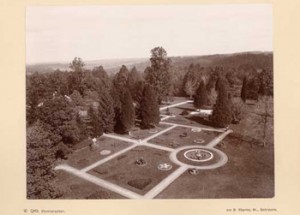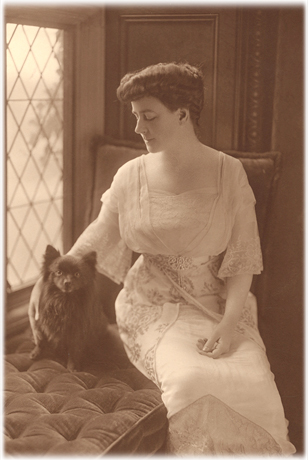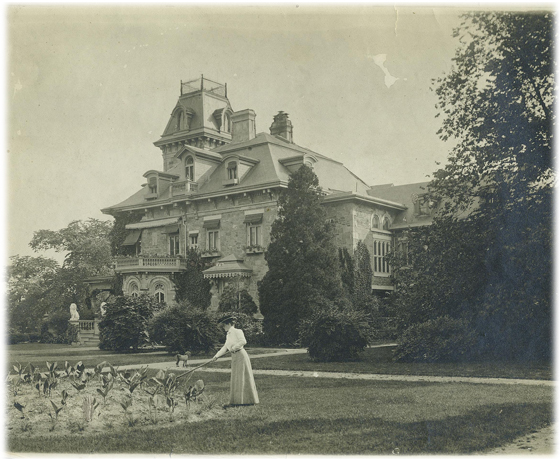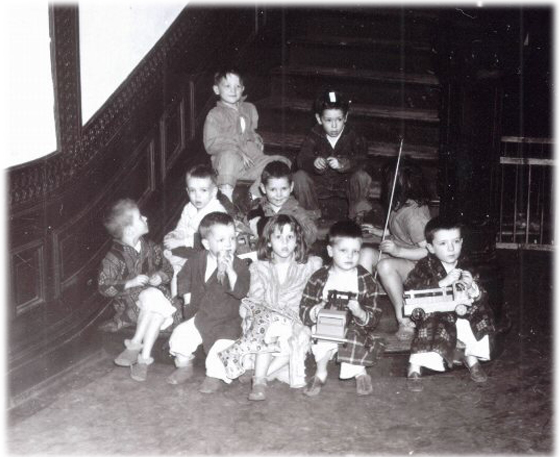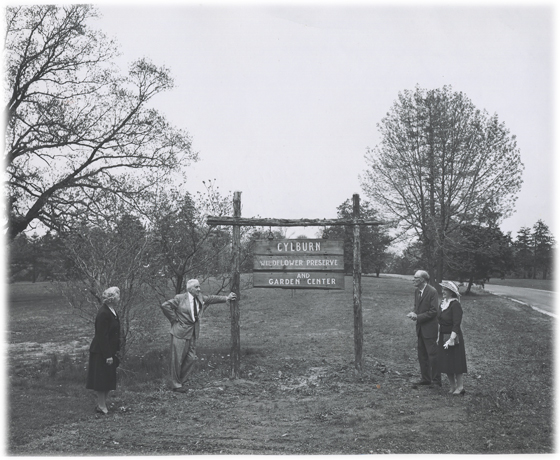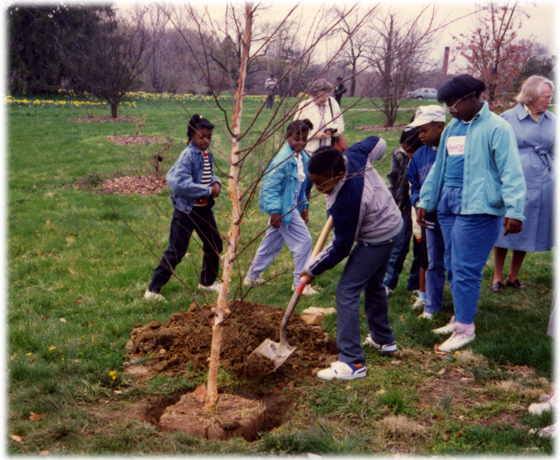This history and website are brought to you by the Cylburn Arboretum Friends. Explore this website to discover all Cylburn Arboretum has to offer.
Select the + next to each milestone to read the full text.
Merchants, millers, miners and manufacturers
Since the Revolutionary War, the Tysons had been active grain merchants with mills originally in Pennsylvania and then on the Jones Falls and 60 acres along the Gunpowder River. The most famous member of the family, Elisha Tyson, was a devout Quaker and a rabid abolitionist. Isaac Tyson, however, chose to abandon the family business to pursue his passion for chemistry and this decision changed the course of the family’s history. Isaac studied geology, mineralogy, and chemistry in France and brought this knowledge back to Maryland. Sometime between 1801 and 1810 Isaac discovered serpentine, a distinctive rock, on his family’s summer estate at Bare Hills. As a chemist, Isaac knew that serpentine often accompanied chromite, an ore that was coveted as a source of chromium.
Why was chromium so desired? Chromium was necessary to produce pigments for glass, glazes, and paint, and as an oxidizing agent for tanning leather in the mid-19th Century. Isaac searched out and found other sources of the ore and eventually dominated the chromite business having bought up all the significant sites from Pennsylvania to Virginia and beyond.
Isaac then expanded his mining industry to include copper. Tyson eventually found himself with a world monopoly on chromite since the original earlier chromium sources in Siberia had petered out. Initially, Baltimore’s clipper ships did a brisk business shipping Isaac’s chromite to England to be processed until 1845, when Isaac built the Baltimore Chrome Works, the first chromium chemical plant in the United States (later Allied Chemical).
From 1833 through 1860, the Tyson Company had a world monopoly on the production and exporting of chromite, and Baltimore exported more chromium than any other port in the world. Because of this, Isaac is considered the father of the American chromium industry. Isaac died in 1861, and that is when the story of Cylburn truly begins.
1863–1888
When Isaac Tyson died, his son, Jesse and his brother, James divided the business; James oversaw mining operations that expanded to Pennsylvania, Vermont, Georgia and California and Jesse, as President of Baltimore Chrome Works, oversaw manufacturing and sales. Both brothers used their newfound wealth to buy tracts of land on which to build impressive estates. James built Ruscombe, not far from Cylburn, and Jesse Tyson, now thirty-seven, purchased land to build a summer home for himself and his recently widowed mother, Hannah Tyson. Jesse named the area “Cylburn”, “burne” from the Scottish for stream or branch, and “Cyl” from the English “syl” for stream, so Cylburn means “wooded stream” perhaps an historical reference to the Tyson’s history as grain merchants on the Jones Falls.
The Cylburn house was built between 1863 and 1888. Several factors contributed to this extended construction time; in 1866 Hannah died and work was temporarily stopped, the Civil War intervened, and, not the least influential, it took immense amounts of time and effort for the arduous process of transporting huge quantities of stone, by oxen, from the other side of the Jones Falls at Bare Hills to Cylburn.
The Cylburn mansion is literally made from the land that furnished Jesse Tyson’s fortune. It is constructed of Gneiss stone from the Tyson mines at Bare Hills. Cylburn was designed by the young and upcoming George Frederick, who designed Cylburn at the age of 19 before being commissioned to create Baltimore’s City Hall at age 21. The building is Victorian Renaissance Revival in design, and was noted for its inlaid floors, marble baths, leaded glass, plasterwork, tall windows and wide porches. Formal gardens and lawns with trees planted by Jesse Tyson himself were surrounded by natural woodland filled with wildflowers, wildlife and native and migrating birds.
Edyth Johns and Jesse Tyson – 1888–1906
In 1888, Jesse Tyson, a sixty-one-year-old confirmed bachelor, met and married Edyth Johns, a nineteen-year-old debutante known for her beauty and horsemanship. Jesse famously remarked, “I have the fairest wife, the fastest horses and the finest house in Maryland.” Edyth and Jesse spent eighteen happy years together, enjoying their home, raising horses, and engaging in the life of Baltimore.
Edyth was actively involved in the Cylburn grounds. She not only planned the gardens, but she was also eager to get her hands dirty planting, pruning and weeding. Both Edyth and Jesse involved themselves with a variety of charitable causes, among them the Society for the Prevention of Cruelty to Animals to whom Edyth left the hefty sum of $100,000 in her will. (She also carpeted the floor of the Carriage House so her horses were comfortable.)
On November 28, 1906, age 80, Jesse Tyson died of pneumonia. He is buried at the Friends Burial Grounds on Harford Road in Baltimore.
1910–1942

In the lobby of a Virginia hotel, a military officer named Bruce Cotten from North Carolina, caught a glimpse of Edyth Tyson, 42, dressed in black mourning. “She was my fate,” he told a friend. In January 1910, he arranged to meet her in Baltimore where he was stationed at Fort McHenry. That summer, Bruce Cotten followed Edyth Tyson to Europe, and on August 4, 1910, they were married at Tunbridge Wells in England.
Together for thirty-two years, Bruce and Edyth continued to develop the Cylburn estate.
Edyth died on April 12,1942, a year after having a stroke. She was 73 years old and is buried at Greenmount Cemetery.
After his wife Edyth’s death in April 1942, Bruce Cotten put the Cylburn property and furnishings up for sale. The estate, though assessed for $92,000, was purchased at auction for $42,300 by the City of Baltimore as part of the Olmstead Brothers 1903 master plan to preserve Baltimore’s stream valleys. Bruce Cotten moved to a carriage house on Hamilton Street, and lived there until his death on April 1, 1954.
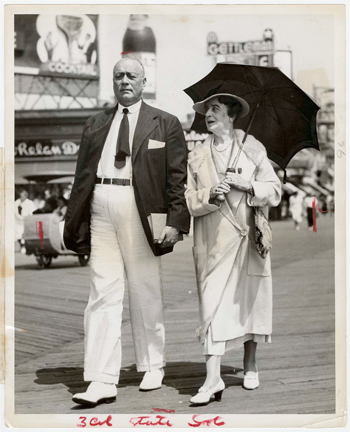
1943–1957
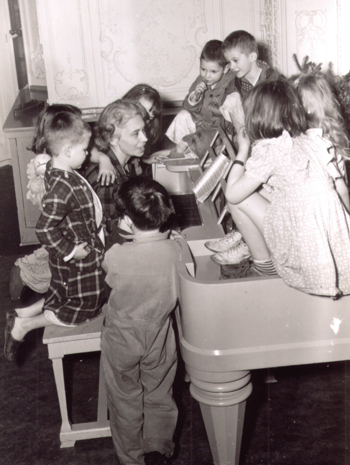
Baltimore City purchased the Cylburn property in the midst of World War II, not an appropriate time to create a new park, so in April 1943, the Park Board lent the Cylburn Mansion to the Department of Public Welfare as a home for neglected and abandoned children. The first five children, brothers and sisters ranging in age from 4 to 11, came to the mansion on June 11, 1943.
Forty-five more children arrived in the following months, all of them white. In August 1945, plans were made to renovate a 14-room tenant house, to be called the Talbert House, for neglected African-American boys. It burned down, however, before renovations could be completed. In the spring of 1954, integration began at Cylburn, first with the staff, then with the children. The Cylburn Home for Neglected Children was one of the few racially integrated facilities in Maryland.
In December 1957, the children living in the mansion were moved to a new home for children on Cold Spring Lane. The children raised at Cylburn return to speak eloquently of a place that served as home, as playroom (what fun to climb the cupola!) and as an educational center. Two hundred-sixty-seven acres of garden and woodland offered a foundation in natural history that foreshadowed the next step in Cylburn’s history.
1954–1981
In 1954 the City approved plans to use the Cylburn property as the Cylburn Wildflower Preserve and Garden Center. The transition did not occur until 1957 when the children were relocated. The purpose was two-fold: to enable adults and youth to understand and enjoy the out-of-doors and to preserve the existing natural beauty and facilities of “Cylburn Park.” Volunteers designed twelve miles of trails and later, with a grant from the Sears Roebuck Company, restored the formal gardens.
A private estate that for more than a century had seen the unfolding of Baltimore history became a public site for the study of natural history—a rich repository of Baltimore’s geologic and ecological and horticultural past.
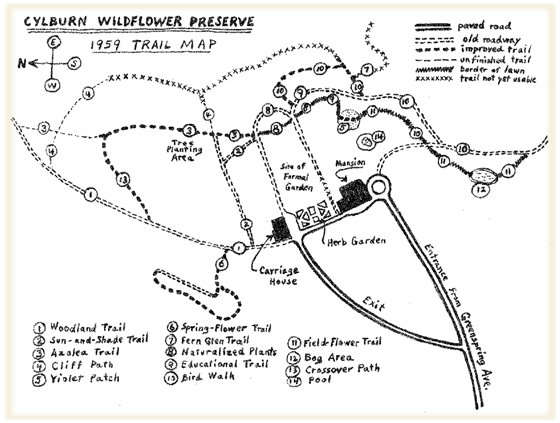
© Cylburn Arboretum Friends Archives
1972
By virtue of its long history and its contribution “in the fields of science and education,” the Cylburn mansion and most of the land were designated as an historical and architectural preservation site and were placed on the National Register in 1972.
1982–the present
Frederick Law Olmsted noted that different kinds of parks achieve particular purposes. On January 7, 1982, the Cylburn parkland was renamed Cylburn Arboretum acknowledging the rich natural resources of the Cylburn property and the long history of careful stewardship of its lawns, gardens, planted trees and natural woodland. Cylburn has served as the horticultural production site for the Baltimore City Horticultural Division since 1958 when Gerard Moudry was appointed Baltimore’s first chief horticulturist. You can still find some of Mr. Moudry’s propagation pots buried in the Moudry Woods. The Cylburn greenhouses grow the plant material that adorns City Hall, street medians and the Howard Peters Rawlings Conservatory. The greenhouses are not open to the public except when Cylburn celebrates Market Day each May.
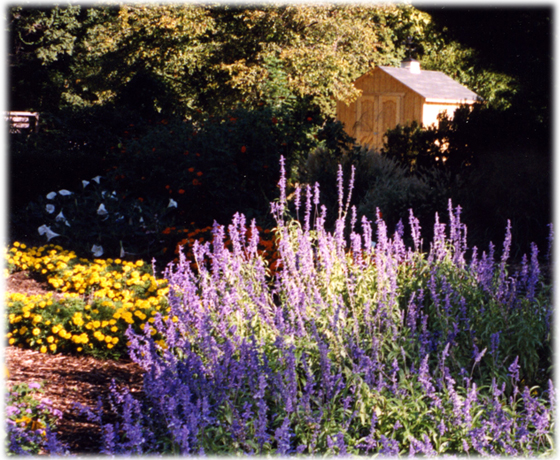
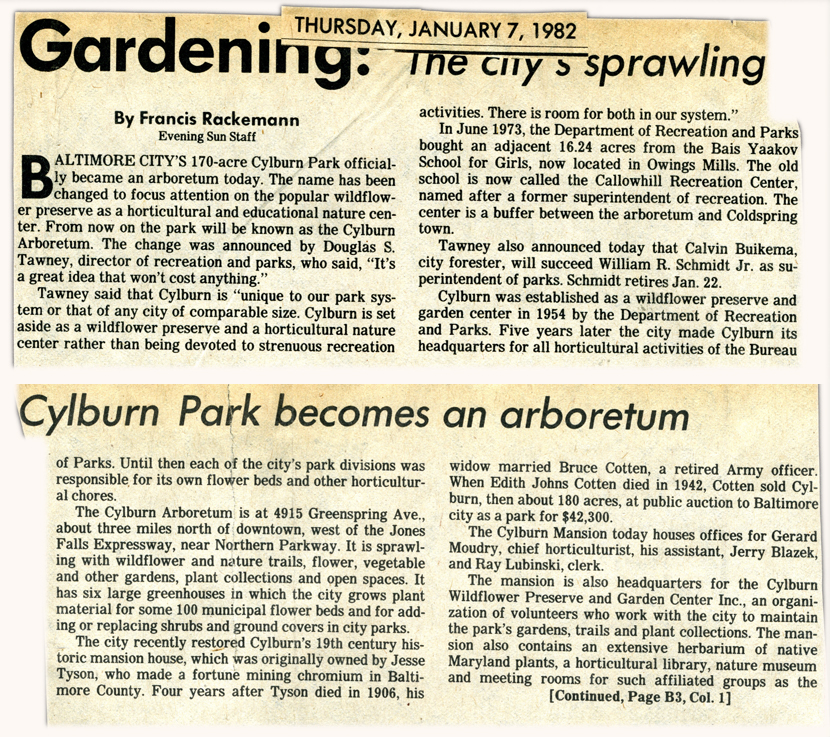
2010
Between 2008–2010, Cylburn constructed the Vollmer Visitor and Education Center (Vollmer Center, for short) utilizing many green building techniques. It features modern solutions to reduce the building’s impact on the environment including composting toilets, a “living” green roof, and geothermal heating and cooling.
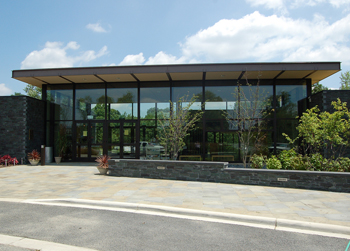
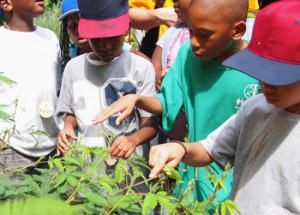
Since 1982, Cylburn has flourished as an arboretum, a park, and an education center. Today it retains a little bit of each part of its history:
- continues the legacy of Jesse and Edyth Tyson with carefully cultivated gardens
- continues the legacy of the home for children by offering a special place where Baltimore children can learn and experience nature
- continues the legacy of the Baltimore Wildflower and Garden preserve by maintaining 3.5 miles of woodland trails punctuated by native plants and wildflowers
A variety of other educational organizations also find their home at Cylburn: The Horticultural Society of Maryland, the Federated Garden Clubs of Maryland and the University of Maryland Baltimore City Master Gardeners are all housed and offer educational programing at Cylburn.
Today the Cylburn Arboretum Friends use the gardens and surrounding nature as the staging area for educational programs and activities for all ages.

